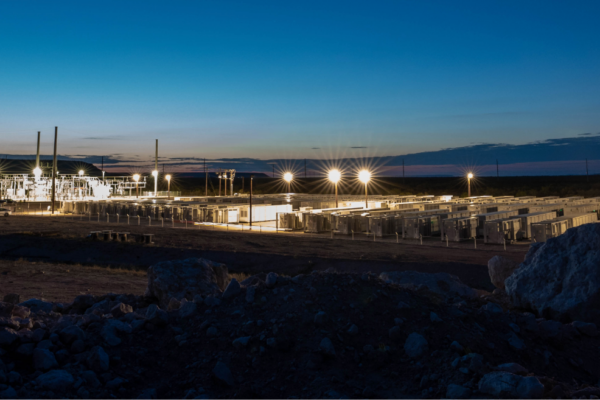As 2022 gets into full swing, we’re sensing both urgency and optimism.
Urgency because we’re now left with just eight years to halve our emissions from 2010 levels in order to stay on a 1.5°C trajectory. Urgency because of the record-shattering floods, fires, and high temperatures in 2021, including the hottest summers ever in the US and Europe. Urgency because our collective emissions went up 6% last year instead of down 7% like Paris demands.
But also optimism because utility-scale solar power declined in cost by 90% between 2009 and 2021. Optimism because 91% of global GHG emissions are now covered by a net zero commitment. Optimism because more than half of the world’s $100T in assets under management are now committed to net zero by 2050. Optimism because in 2021 banks earned more fees arranging green-related bond sales and loans than they did helping fossil-fuel companies raise money in the debt markets.
And optimism because we’re in a unique position to send market signals through our early-stage climate tech investments. According to PwC, climate tech now represents $0.14 of every VC dollar invested.
According to PwC, climate tech now represents $0.14 of every VC dollar invested.
We agree with Larry Fink of BlackRock, the largest asset manager in the world, when he said in his 2022 annual letter to CEOs that the“decarbonizing of the global economy is going to create the greatest investment opportunity of our lifetime.” The next 1,000 unicorns, Fink writes, won’t be search engines or social media companies, but startups that make decarbonization scalable and affordable for consumers.
Recognizing our responsibility as stewards of capital — and the massive economic opportunity presented by investing early in the green transition — Valo signed the Net Zero Asset Manager pledge in 2021 which commits us to achieving net zero emissions by 2050 with clear interim targets by 2025 and 2030, both as a firm and within our portfolio. Here are some specifics of the commitment (the entire list is here):
- Take account of portfolio scope 1 and 2 emissions, and material portfolio scope 3 emissions to the extent possible
- Prioritize real economy emissions reductions and use offsets or invest in long-term carbon removal only when there are no technologically or financially viable alternatives to eliminate emissions
- Engage with portfolio companies and asset owners to provide information and analytics on getting to net zero
As one of the only VC firms to have signed the pledge thus far, we immediately knew that we would have to approach it with a unique set of insights and tools particular to our situation. Measuring impact and ESG considerations as a venture firm can be challenging because many of the companies we work with are at early stages, and may not have the time and financial resources to devote to ESG tracking, let alone the right data on hand to analyze.
Build the house right, right from the start
Despite the hurdles, we still think it’s important for VCs and early-stage companies to measure ESG criteria and encourage decarbonization. Why? ESG metrics are increasingly demanded by LPs, large asset owners and managers like BlackRock; the SEC may soon codify climate risk disclosures into law; and the International Sustainability Standards Board has now been formed to provide a comprehensive global baseline of sustainability disclosures. As our portfolio companies scale, we think it’s important to build the house right, right from the start — in other words, to have protocols established around ESG measurement and decarbonization targets — rather than having to retrofit the house later on when it’s much larger.
As we’ve mulled over how to adopt this net zero pledge in a context appropriate to the size of our portfolio companies, here are the eight learnings we’ve captured:
1. Use measurement as a gateway to management
The classic dictum “what gets measured gets managed” applies to ESG and carbon accounting. In the case of carbon accounting, we’ve found that understanding the “shape” of a company’s carbon footprint — for example the major sources of emissions within the company’s operation — is as important as understanding the magnitude of emissions. At first, we were very focused on finding ways to quantify the scope 1, 2, and 3 emissions for our operations as a fund and our portfolio companies. But it’s important to remember that aggregated emissions numbers may offer limited insight into how to decarbonize. Rather, the process of calculating the numbers is where the real insights into the sources and causes of emissions arise.
The good news is that there are a number of companies we’ve discovered along the way that help VCs and private equity firms calculate portfolio company emissions. There are many tools out there and some of the ones we explored that are most relevant to asset managers include Proof of Impact, Persefoni, Greenstone, InvestShift, SINAI Technologies and Optera (the last two being portfolio companies). In addition, the Partnership for Carbon Accounting Financials (PCAF) provides detailed instructions on how equity investors can calculate portfolio emissions.
2. Prioritize emissions reductions over offsetting
It has been said before — by the IPCC and Project Drawdown among others — that offsetting is the “cherry on top” when it comes to decarbonization. At worst, offsetting is actually a distraction from the hard work we all need to do to decarbonize our economy. As you can see in the gray portion of the graph below, the bulk of decarbonization will need to come through traditional mitigation steps, including switching to CO2-free renewable energy and electrifying as much as possible. Use offsets only when other measures to decarbonize have been exhausted.
3. Seek out quality when you have to buy offsets
For difficult-to-abate emissions, offsetting is necessary to make it to net zero. Faced with a myriad of offsetting options, which are the best to choose? Here are some of the principles we’ve followed:
- Help scale emerging technologies — Build market demand for high quality credits to help get removal technologies down the cost curve
- Consider the time value of carbon — Solutions available and implementable sooner are more valuable than those that take longer, just like the concept of the time value of money
- Make it additional, permanent, and verifiable — Creating trust and confidence in the voluntary offset market will depend on offsets that are additional (e.g., they add decarbonization capacity rather than maintaining the status quo), permanent (e.g., they won’t go up in the smoke of a forest fire), and verifiable (e.g., third parties with strict standards endorse them)
In 2021, after reducing our emissions as much as possible, Valo offset our remaining travel and commuting emissions by buying offsets through Puro.earth, a B2B marketplace focused on permanent carbon removal projects. The travel booking platform we use, TripActions, calculates our travel emissions and we calculate our commuting emissions using emissions factors from the US EPA. Through Puro, we were able to buy offsets from:
- Ekovilla, a Finnish company producing cellulose fiber insulation made primarily from waste paper
- Are Treinduster, a Norwegian mass timber company that replaces concrete and steel in construction of commercial, residential and other buildings
- LapWall, a Finnish company making prefabricated mass timber building elements
We selected these projects because they a) are implementable now, b) help scale mass timber and cellulosic insulation technologies, c) are vetted and verified according to Puro’s methodology, d) have a long time horizon for sequestration (at least 50 years), and e) provide additional benefits beyond carbon sequestration.
For more information on how venture capital firms are approaching offsets for their own operations, read Piva Capital’s excellent guide to how they decided to buy their offsets.
4. Use the 80/20 rule
The 80/20 rule — formally known as the Pareto principle — has been applied to economics, agriculture and even dieting, and also applies here. In the case of emissions, the sources are even more concentrated: Just 100 companies worldwide are responsible for over 71% of global GHG emissions. For VC and PE firms with large and diverse portfolios, it can be hard to know where to start with engagement on net zero targets. We’ve found it helpful to focus on the 20% of companies within our portfolio that likely produce 80% of the emissions. The EPA has information about which sectors broadly contribute the most to national GHG emissions. Similarly, portfolio companies should be encouraged to focus on the 20% of business activities that produce the bulk of their emissions.
5. Regard your net zero pledge as more than a “sign on the dotted line” exercise
Bringing our economy to net zero isn’t going to happen just because someone signed a pledge saying it would. We believe that net zero pledges require real, proactive work and commitment from both asset managers and their portfolio companies. The Net Zero Asset Manager pledge requires that funds commit to going net zero by 2050, with interim targets for 2030 consistent with a fair share of the 50% global reduction in CO2 recommended by the IPCC to flatten warming levels. But funds should not wait until approaching these far-out deadlines to take action on pledges. There are benefits that both funds and companies can reap today from engaging in ESG tracking and decarbonization. As more and more limited partners demand ESG transparency — and uphold the net zero pledges that they’ve signed themselves — we believe that VCs who actively engage in ESG tracking will have an advantage in the fundraising process. The same logic applies to portfolio companies. At a time when both investors and customers increasingly codify environmental considerations in their investment and purchasing decisions, taking the time to engage with portfolio companies on their ESG measurement and communication strategy can help them tell their impact story to both their customers and investors.
BCG and WEF have measured the many ways that climate leading organizations can gain competitive advantage by attracting and retaining better talent, realizing higher growth, saving costs, avoiding regulatory risk, accessing cheaper capital and achieving higher shareholder returns.
6. Invest in companies that drive positive environmental outcomes as a direct output of their business model
To us, pledging to become net zero means supporting the solutions that move us toward a low-carbon economy. We are constantly learning and seeking new ways to identify technologies and business models that reduce and remove carbon from the atmosphere. Valo’s investment in Modern Electron is our most recent example of doing just that. The Modern Electron Reserve — a heat-to-electricity furnace retrofit — will reduce a home’s carbon footprint by 1 ton of CO2 each year. This will have a material impact on the built environment as it can be deployed immediately, which is another important criteria for our investments.

Life cycle assessment can also be helpful in identifying the relative carbon footprint on a per-product basis. And the free CRANE tool provided by Prime Coalition and Rho Impact is another helpful starting point to understand the relative decarbonization potential of certain technologies. We’re always looking to collaborate with other VCs on how to structure our pipeline and diligence process to prioritize high-impact decarbonization solutions.
7. Set short-term, annual milestones rather than a vague 2050 promise
Dr. Jonathan Foley, executive director of Project Drawdown, has some interesting critiques and suggestions for improving net zero pledges. Foley points out that many companies on Earth might not even exist in 2050, and certainly not with the current leadership. Any of you who’ve read The Ministry for the Future can appreciate what this looks like. Foley advocates setting short-term goals in service of long-term targets. Foley writes: “cutting emissions to zero by 2050 may be an excellent long-term goal, but it should come with intermediate (e.g., cutting emissions in half by 2030) and short-term (e.g., cutting emissions by at least 7% every year) milestones.” To this end, we plan to ask our portfolio companies to annually report their decarbonization goals and progress towards them.
8. Differentiate between ESG and impact
For the purposes of driving decarbonization within individual companies, it’s important to differentiate between impact metrics (e.g., tons of carbon dioxide saved vs. an incumbent technology) and ESG metrics (e.g., tons of carbon dioxide reduced from a company’s operations by switching to renewable energy). Some environmental impact metrics that are calculated in comparison to an incumbent technology have a lot of assumptions that have gone into calculating them. As such, as we decarbonize it’s important to understand where a company’s actual emissions are coming from and how to reduce the sources of those emissions, in addition to the technology’s comparative impact. Engaging with ESG frameworks like SASB and GRI also encourages focusing on equity implications through measuring “S” and “G” metrics involving DEI and environmental justice.
We are now piloting the use of ESG and carbon measurement tools with our portfolio companies, and plan to maintain a collaborative dialogue with fellow VCs, asset managers and startups on what we’re learning. We invite anyone interested in these topics to reach out directly (julia@valoventures.org), or to join Impact Capital Managers or the Net Zero Asset Managers Initiative.
Onward!



